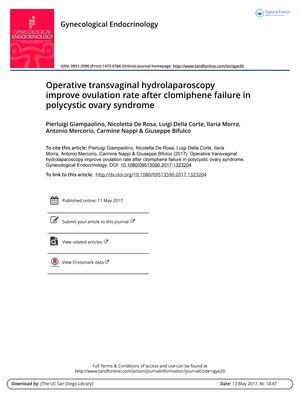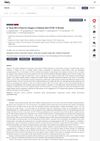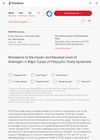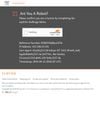Operative Transvaginal Hydrolaparoscopy Improves Ovulation Rate After Clomiphene Failure in Polycystic Ovary Syndrome
May 2017
in “
Gynecological Endocrinology
”

TLDR Transvaginal hydrolaparoscopy is effective for increasing ovulation and pregnancy rates in women with PCOS who didn't respond to clomiphene.
The study evaluated the impact of transvaginal hydrolaparoscopy (THL) ovarian drilling on 123 infertile patients with polycystic ovary syndrome (PCOS) who did not respond to Clomiphene citrate (CC). Out of 123 participants, 117 completed the study, and it was observed that ovulation rates significantly improved to 64.1% after one month, 79.5% after three months, and 82.9% after six months post-treatment. Additionally, 28 patients achieved pregnancy during the follow-up, indicating a 70.1% pregnancy rate. The study concluded that THL ovarian drilling is an effective second-line therapy for improving ovulation and pregnancy rates in women with CC-resistant PCOS. Despite its limitations, such as a small sample size and lack of randomization, the study suggests that THL offers advantages like reduced risk of adhesion, lower morbidity, and cost-effectiveness, particularly for obese patients. Further research with a larger cohort and comparative studies is recommended to validate these findings.



